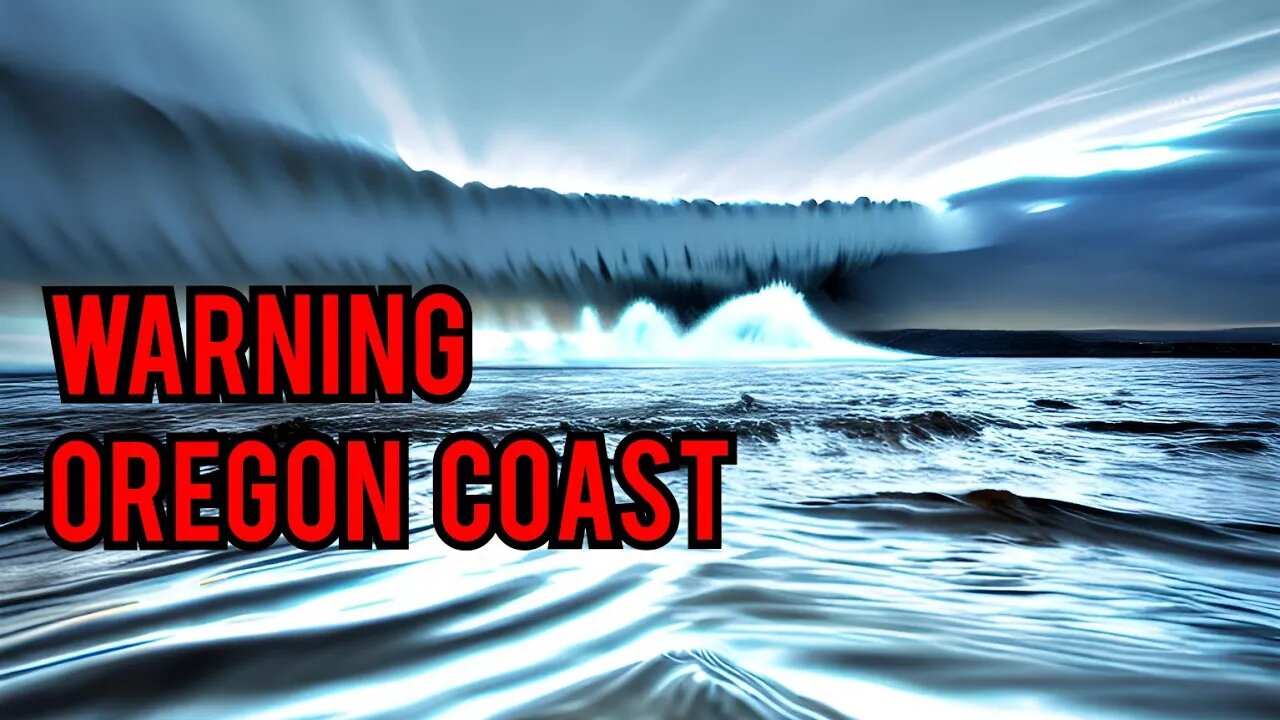Premium Only Content

Oregon Coast to be hit by a tsunami- Earthquake, prophecy, dream video It seemed so real
Please do not unsubscribe to me please - I was just very compelled to make this video . It was just so real .
The Oregon coast lies along the Cascadia Subduction Zone, a 700-mile-long fault line that runs from Northern California to Vancouver Island in Canada. This subduction zone is where the Juan de Fuca Plate is slowly sliding beneath the North American Plate. The tectonic forces that are generated by this movement build up stress in the rocks and can eventually cause earthquakes.
The last major earthquake on the Cascadia Subduction Zone occurred on January 26, 1700, and had a magnitude of around 9.0. The earthquake was so powerful that it caused a tsunami that reached Japan, over 5,000 miles away. The Pacific Northwest has been relatively quiet since then, but geologists believe that the region is due for another major earthquake and tsunami.
There are several factors that contribute to the risk of a major earthquake and tsunami on the Oregon coast. First, the Cascadia Subduction Zone is capable of producing earthquakes with magnitudes of 9.0 or higher, which are some of the largest earthquakes that can occur on Earth. Second, the subduction zone has been accumulating stress for over 300 years since the last major earthquake, which means that the likelihood of another earthquake is increasing over time. Third, the population of the Pacific Northwest has grown significantly since the last major earthquake, which means that there are more people living in the region who are vulnerable to the effects of an earthquake and tsunami.
In recent years, scientists have been studying the Cascadia Subduction Zone more closely in order to better understand the risk of a major earthquake and tsunami. They have been using a variety of techniques, including seismology, geodesy, and paleo seismology, to study the history and behavior of the fault.
One of the ways that scientists study the Cascadia Subduction Zone is by monitoring earthquakes that occur in the region. In addition to the large earthquakes that are caused by the subduction of the Juan de Fuca Plate, there are also smaller earthquakes that occur in the crust above the subduction zone. These smaller earthquakes can help scientists to understand the behavior of the fault and to track the buildup of stress in the rocks.
Another way that scientists study the Cascadia Subduction Zone is by using GPS and other geodetic techniques to measure the movement of the ground. By tracking the movement of the ground over time, scientists can determine how much stress is building up in the rocks and where the stress is concentrated.
Paleoseismology is another technique that scientists use to study the Cascadia Subduction Zone. This involves looking for evidence of past earthquakes in the geological record. For example, scientists can look for layers of sediment that have been disrupted by earthquakes or for evidence of tsunamis in coastal deposits.
One of the key findings from these studies is that the Cascadia Subduction Zone is capable of producing earthquakes with magnitudes of 9.0 or higher. This is based on evidence from paleoseismology, as well as from computer models that simulate the behavior of the fault. In addition, the studies have shown that the subduction zone has been accumulating stress for over 300 years since the last major earthquake. This means that the likelihood of another earthquake is increasing over time.
Scientists are also studying the potential impacts of a major earthquake and tsunami on the Oregon coast. These impacts could include damage to buildings and infrastructure, as well as the loss of life and injuries. In addition, a major earthquake and tsunami could have economic impacts on the region, including damage to the fishing and tourism industries.
One of the challenges of preparing for a major earthquake and tsunami on the Oregon coast is that it is difficult to predict exactly when and where the earthquake will occur. Unlike some other types of natural disasters, such as hurricanes, earthquakes cannot be forecasted days or weeks in advance. Instead
-
 3:16:34
3:16:34
Mike Martins Channel
5 days ago $2.64 earnedMike in the Night E584 - Gates Insider Admits ‘War Drones’ Are Spraying Chemtrails Over America, Ukraine will have to trade land for peace – EU state’s president, Next Weeks News Today, Headlines , Call ins
2.56K11 -
 1:04:12
1:04:12
PMG
1 day ago $2.79 earned"I’ll be DRONED for Christmas!"
11.8K2 -
 23:38
23:38
RealitySurvival
1 day agoBest Anti-Drone Rounds For Self Defense
8.08K2 -
 57:43
57:43
barstoolsports
15 hours agoBest Shot Wins The Game | Surviving Barstool S4 Ep. 7
199K9 -
 1:52:24
1:52:24
Kim Iversen
10 hours agoLuigi Mangione Charged With TERRORISM | Liz Cheney Accused Of WITNESS TAMPERING, Faces 20 YEARS IN JAIL
105K142 -
 6:50:10
6:50:10
Akademiks
11 hours agoJay Z says he aint NEVER been friends w/ DIDDY! Bhad Bhabie lost her man? Travis Hunter Down Bad?
110K13 -
 2:27:04
2:27:04
AirCondaTv Gaming
10 hours ago $23.47 earnedWar Thunder - Tankering Around for That 10 Bomb
56.1K5 -
 4:19:05
4:19:05
SpartakusLIVE
13 hours agoThe MACHINE locks in for 12-hour POWER stream
39.3K1 -
 1:58:40
1:58:40
Robert Gouveia
12 hours agoJ6 Coverup: Prosecute LIZ CHENEY; NY Judge REJECTS Immunity; Trump Breaks Gag?
172K77 -
 2:22:06
2:22:06
WeAreChange
10 hours agoPSYOP Spreads: Drones Shut Down Airport In New York!
109K50